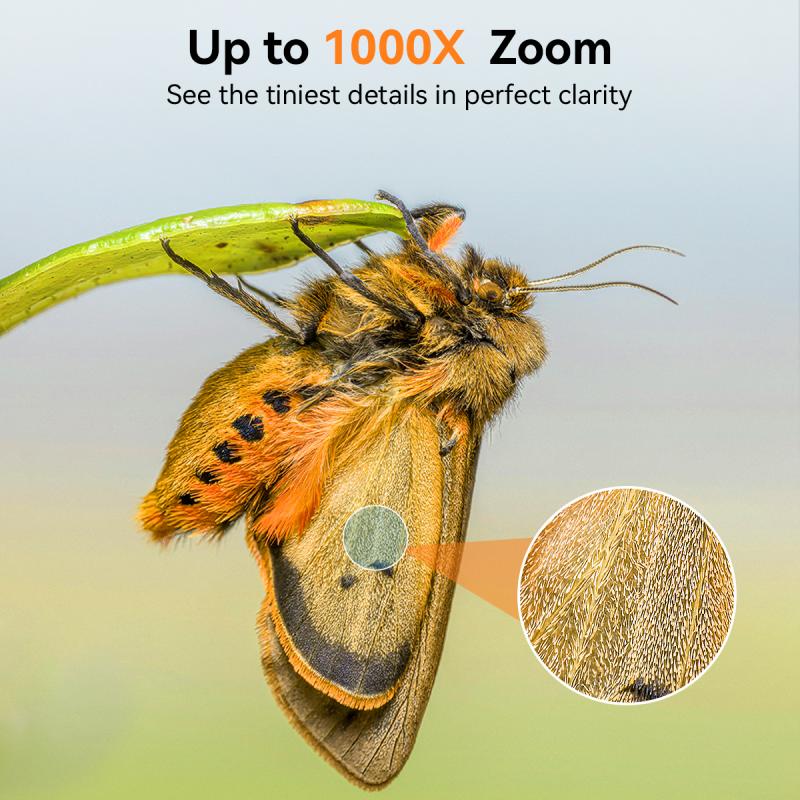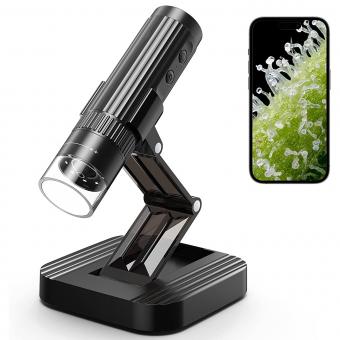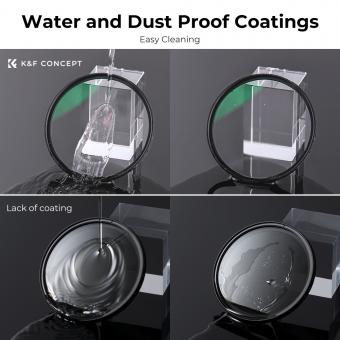How To See Chloroplasts Under Microscope ?
To see chloroplasts under a microscope, you will need to prepare a sample of plant tissue. First, take a small piece of the plant tissue and place it on a microscope slide. Then, add a drop of water to the tissue to keep it moist. Next, cover the tissue with a coverslip.
To visualize the chloroplasts, you will need to use a compound microscope with a high magnification objective lens. Start with a low magnification objective lens to locate the plant tissue on the slide. Once you have located the tissue, switch to a high magnification objective lens to observe the chloroplasts.
To enhance the visibility of the chloroplasts, you can use a stain such as iodine or methylene blue. These stains will bind to the chloroplasts and make them more visible under the microscope. However, be careful not to use too much stain as it can damage the chloroplasts and make them difficult to observe.
1、 Sample preparation for observing chloroplasts
Sample preparation for observing chloroplasts under a microscope involves several steps. The first step is to obtain a fresh leaf sample from a plant. The sample should be placed in a petri dish containing a small amount of water. The leaf should then be cut into small pieces using a sharp blade or scissors. The pieces should be placed on a microscope slide and covered with a coverslip.
To observe chloroplasts, the sample should be stained with a suitable dye. One commonly used dye is iodine. A drop of iodine solution should be added to the sample and allowed to sit for a few minutes. The excess iodine should be removed by gently blotting the slide with a paper towel.
Another method for staining chloroplasts is to use a solution of methylene blue. The sample should be immersed in the solution for a few minutes and then rinsed with water.
Once the sample is stained, it can be observed under a microscope. A compound microscope with a high magnification lens is recommended for observing chloroplasts. The microscope should be adjusted to the appropriate magnification and focus.
It is important to note that chloroplasts are highly sensitive to light and can be easily damaged. Therefore, it is recommended to observe the sample under low light conditions and for a short period of time.
In recent years, new techniques such as confocal microscopy and fluorescence microscopy have been developed for observing chloroplasts. These techniques allow for more detailed and precise observations of chloroplasts and their functions within the cell.

2、 Microscopy techniques for visualizing chloroplasts
How to see chloroplasts under a microscope is a common question among students and researchers studying plant biology. Chloroplasts are organelles found in plant cells that are responsible for photosynthesis, the process by which plants convert light energy into chemical energy. To visualize chloroplasts under a microscope, several microscopy techniques can be used.
One of the most common techniques is bright-field microscopy, which uses visible light to illuminate the sample. However, chloroplasts are often difficult to see using this technique because they are transparent and have a similar refractive index to the surrounding cytoplasm. To enhance the contrast between chloroplasts and the surrounding cytoplasm, staining techniques can be used. For example, staining with iodine or safranin can highlight the chloroplasts and make them more visible under the microscope.
Another technique that can be used to visualize chloroplasts is fluorescence microscopy. This technique uses fluorescent dyes that bind specifically to chlorophyll, the pigment responsible for photosynthesis. When excited with a specific wavelength of light, the dye emits a fluorescent signal that can be detected using a fluorescence microscope. This technique allows for the visualization of chloroplasts in living cells and can provide information about their distribution and dynamics.
In recent years, advances in super-resolution microscopy have also allowed for the visualization of chloroplasts at higher resolution. Techniques such as structured illumination microscopy (SIM) and stimulated emission depletion (STED) microscopy can provide images with a resolution of up to 20 nanometers, allowing for the visualization of individual thylakoid membranes within chloroplasts.
In conclusion, there are several microscopy techniques that can be used to visualize chloroplasts under a microscope, including bright-field microscopy, staining techniques, fluorescence microscopy, and super-resolution microscopy. The choice of technique will depend on the specific research question and the level of resolution required.

3、 Staining methods for enhancing chloroplast visibility
Staining methods for enhancing chloroplast visibility are commonly used to see chloroplasts under a microscope. One of the most commonly used stains is iodine, which stains the starch granules within the chloroplasts. Another commonly used stain is safranin, which stains the cell walls and cytoplasm, making the chloroplasts more visible. Other stains that can be used include methylene blue, toluidine blue, and crystal violet.
To see chloroplasts under a microscope, the first step is to prepare a sample of the plant tissue. This can be done by cutting a small piece of the leaf or stem and placing it on a microscope slide. The sample can then be covered with a coverslip and observed under a microscope.
To enhance the visibility of the chloroplasts, a staining solution can be added to the sample. The staining solution should be chosen based on the type of stain that is desired. For example, if iodine is being used, a solution of potassium iodide and iodine can be added to the sample. If safranin is being used, a solution of safranin can be added to the sample.
Once the staining solution has been added, the sample can be observed under a microscope. The chloroplasts should be visible as green or yellow-green structures within the plant cells.
It is important to note that staining methods can affect the structure and function of the chloroplasts. Therefore, it is important to use staining methods carefully and to interpret the results with caution.
In recent years, advances in microscopy techniques have allowed for the visualization of chloroplasts without the need for staining. For example, confocal microscopy and super-resolution microscopy can provide high-resolution images of chloroplasts in living cells. These techniques are becoming increasingly popular in plant biology research and are helping to advance our understanding of chloroplast structure and function.

4、 Factors affecting chloroplast morphology and structure
How to see chloroplasts under a microscope:
To see chloroplasts under a microscope, you will need to prepare a sample of plant tissue. The tissue should be thin enough to allow light to pass through it, so it is recommended to use a microtome to slice the tissue into thin sections. Once you have a thin section of tissue, you can place it on a microscope slide and add a drop of water to keep it moist. Then, cover the sample with a coverslip and place it under the microscope. Adjust the focus until you can see the chloroplasts clearly.
Factors affecting chloroplast morphology and structure:
Chloroplast morphology and structure can be affected by a variety of factors, including light intensity, temperature, water availability, and nutrient availability. For example, high light intensity can cause chloroplasts to become smaller and more numerous, while low light intensity can cause them to become larger and fewer in number. Temperature can also affect chloroplast structure, with high temperatures causing chloroplasts to become more elongated and low temperatures causing them to become more rounded.
Recent research has also shown that chloroplast morphology and structure can be influenced by the plant's circadian clock. The circadian clock is a biological clock that regulates many physiological processes in plants, including photosynthesis. Studies have shown that the circadian clock can affect the size and shape of chloroplasts, as well as the distribution of chloroplasts within the cell. This research has important implications for understanding how plants respond to changes in their environment and how they optimize their photosynthetic efficiency.







































